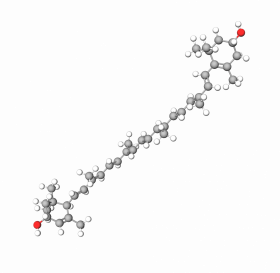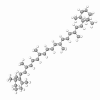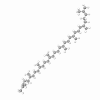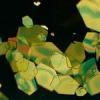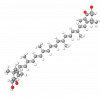Lutein is one of the carotenoids, an anti-aging ingredient, powerful free-radicle quenching antioxidant found in plants, fruits, and leafy green vegetables (spinach, peas, cabbage, peppers, oranges, kiwi, and grapes). It belongs to the oxygen-containing carotenoids, which are called xanthophylls. Unlike β-carotene, lutein is a non-provitamin A carotenoid. Lutein is easily recognized in nature due to its yellow and orange-red colors.
The primary function of this fat-soluble pigment in the human body is to maintain sharp, healthy eyesight located in the area of the retina called the macula, the center for sharp and focused vision.
Lutein stimulates the skin’s renewal process; helps fight the damaging effects of sunlight, pollution, stress, and other aging factors. The primary function of lutein in the skin revealed by research is its capacity to serve as an antioxidant. In addition, it protects against damaging reactive oxygen species (ROS). ROS arise from normal reactions in the body and the environment, for example, cigarette smoke and air pollutants.
In addition to these quenching capacities, lutein can absorb harmful blue light. Blue light possesses the highest energy level of the visible spectrum, and this energy has the potential to cause damage to the skin.Ingredients
Lutein and skin
Like other carotenoids, such as beta-carotene, lutein accumulates in the skin when taken orally. However, the exact mechanism of lutein delivery to the skin is not currently understood. One possibility is that lutein is carried to the dermis by blood serum and then diffuses through the epidermis to the skin's surface. Another theory is that lutein reaches the skin's surface via the sebaceous glands (which would be a faster route, allowing the benefits to be felt sooner).
Antioxidant effect
Lutein is a powerful antioxidant that counteracts the effects of oxidative stress in the skin at a cellular level. Antioxidants are essential because oxidation is a significant factor in intrinsic skin aging processes and extrinsic skin aging processes brought on by exposure to sunlight. In addition, antioxidants control the free radicals that damage the skin by damaging cell structures.
It is also possible that lutein and other antioxidants influence cellular signaling pathways and may accelerate cell cycle progression, growth, and repair. Human studies have examined the potential benefits for skin health of taking lutein either on its own or as part of an antioxidant combination.
Combination with other antioxidants
Research has demonstrated that when administered in combination with other carotenoids (lycopene and β-carotene), lutein protects human skin against UV- induced erythema. In this study, 8 mg lutein was given with 8 mg lycopene and 8 mg beta-carotene. In a follow-up study, a combination of 3 mg lutein, 3 mg lycopene, 4.8 mg beta-carotene, 10 mg vitamin E, and 75 mg selenium improved skin structure in terms of density and thickness roughness (not significant) and scaling – in human volunteers.Combination of oral and topical treatments
Skin hydration and lipid peroxidation inhibition were improved by combining 3 mg of lutein with vitamins C and E and alpha-lipoic acid. The effects of combined oral and topical lutein treatment on human skin were further analyzed in a double-blind, placebo-controlled study. This showed that oral lutein intake increased skin hydration by 40% and skin elasticity by 10%. Combined oral and topical administration provided a higher degree of protection than oral or topical treatment alone.
